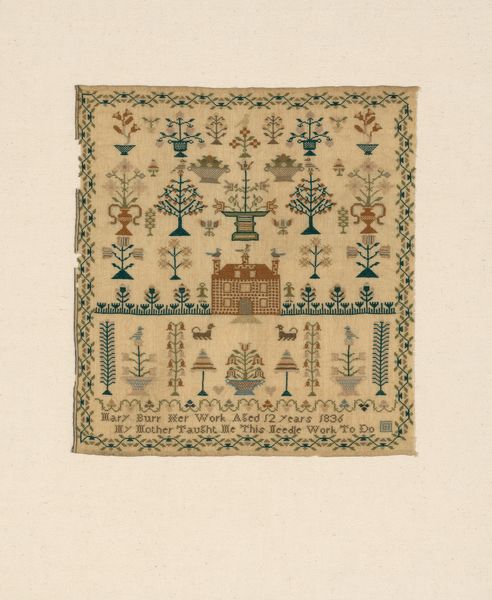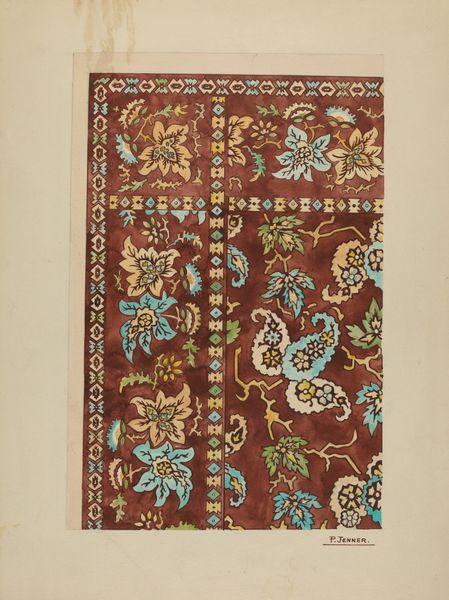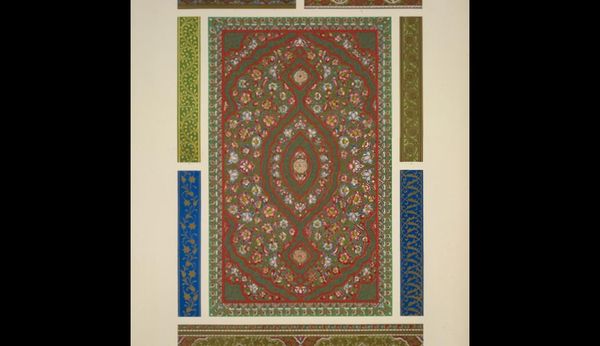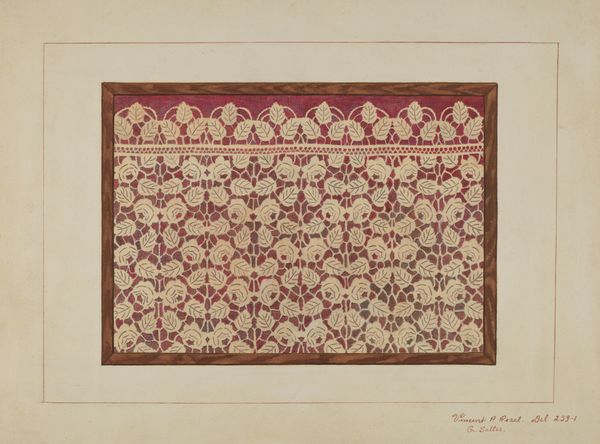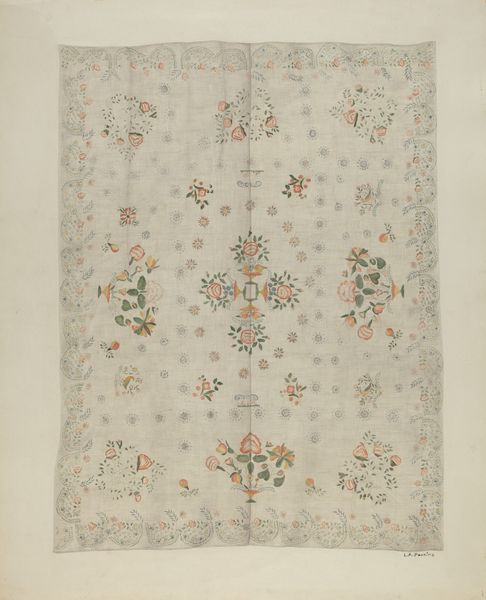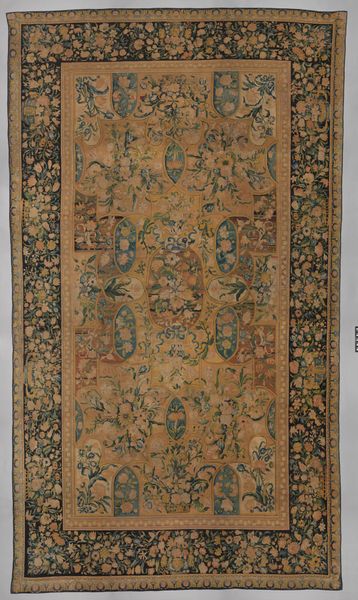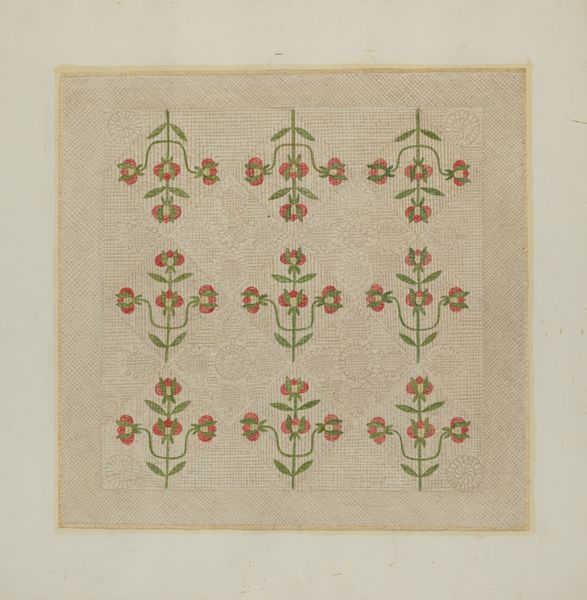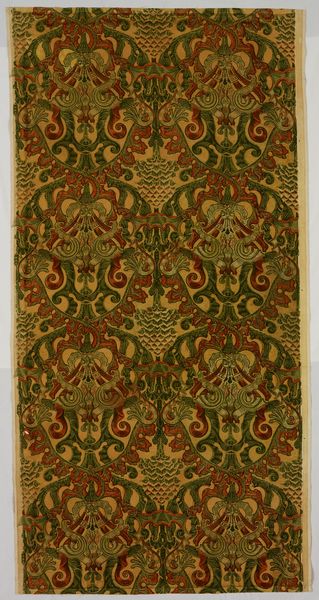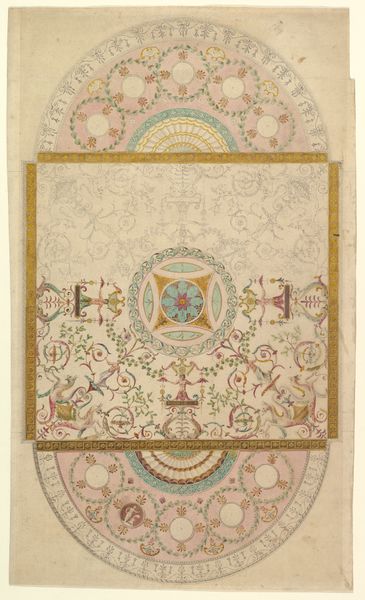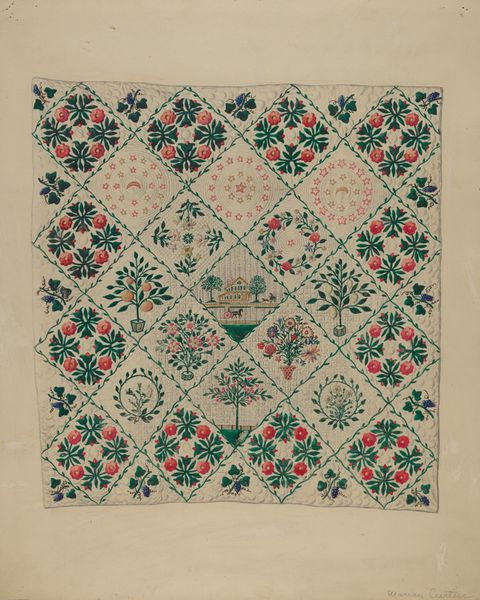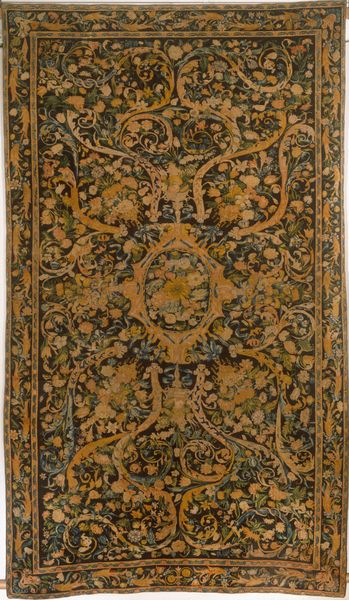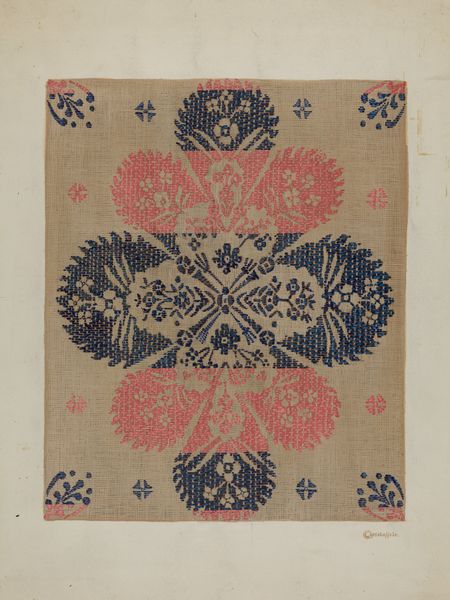
drawing, weaving, textile
#
drawing
#
weaving
#
landscape
#
textile
#
figuration
#
folk-art
#
genre-painting
Dimensions: 44.8 × 33.1 cm (17 5/8 × 13 in.)
Copyright: Public Domain
Curator: Here we have an extraordinary textile work to consider, a sampler titled simply, "Sampler." It was created sometime between 1800 and 1850 by Emma Riches and now resides here at The Art Institute of Chicago. Editor: My immediate thought is...wistful. There's such deliberate, tender detail, almost a yearning stitched into every little tree and flower. It's like looking into a very personal dream. Curator: Indeed. Samplers like this functioned not only as demonstrations of skill in needlework but also reflected a young woman's social standing and education. The materiality here, the precise linen weave, the careful color choices of thread--they all speak to a certain status, domestic labor turned into an art form. Editor: It’s more than just domestic labor, isn't it? There is an element of narrative at play, maybe the maker inserting herself into some kind of imagined ideal scene. Or did everyone follow patterns at this time? Curator: Both really. Pattern books were circulated, of course, disseminating popular motifs, but often girls adapted and individualized these. The placement, for example, of human figures adds symbolic narrative, or even personalized memories and values. This blend of convention and innovation interests me immensely. Editor: Right. And speaking of blending, I can't ignore this tension of folk-art charm bumping up against rigid symmetry. Did you notice the human and animal figures carefully mirrored across from each other, as if they were creatures from heraldic shields? And is that her name at the bottom of the piece? Curator: Indeed, “Emma Riches Her Work Aged 13 Years”. So young. And, exactly, consider these craft traditions evolving—weaving, drawing, the overall textile design becoming both folk and "fine" art, questioning these binaries we’ve constructed around them. It also becomes a very specific trace, a direct inscription of Emma Riches's existence and handiwork. Editor: A beautiful thought, really—to transform simple domestic skill into art. So Emma is telling us she's 13. Curator: The work, ultimately, connects material practice to social histories and, even, to individual lives and aspirations. We see that very clearly here. Editor: I can see why you see what you see and appreciate it more fully. Now it feels like such an artifact from a lost and delicate world. I love it even more now.
Comments
No comments
Be the first to comment and join the conversation on the ultimate creative platform.
